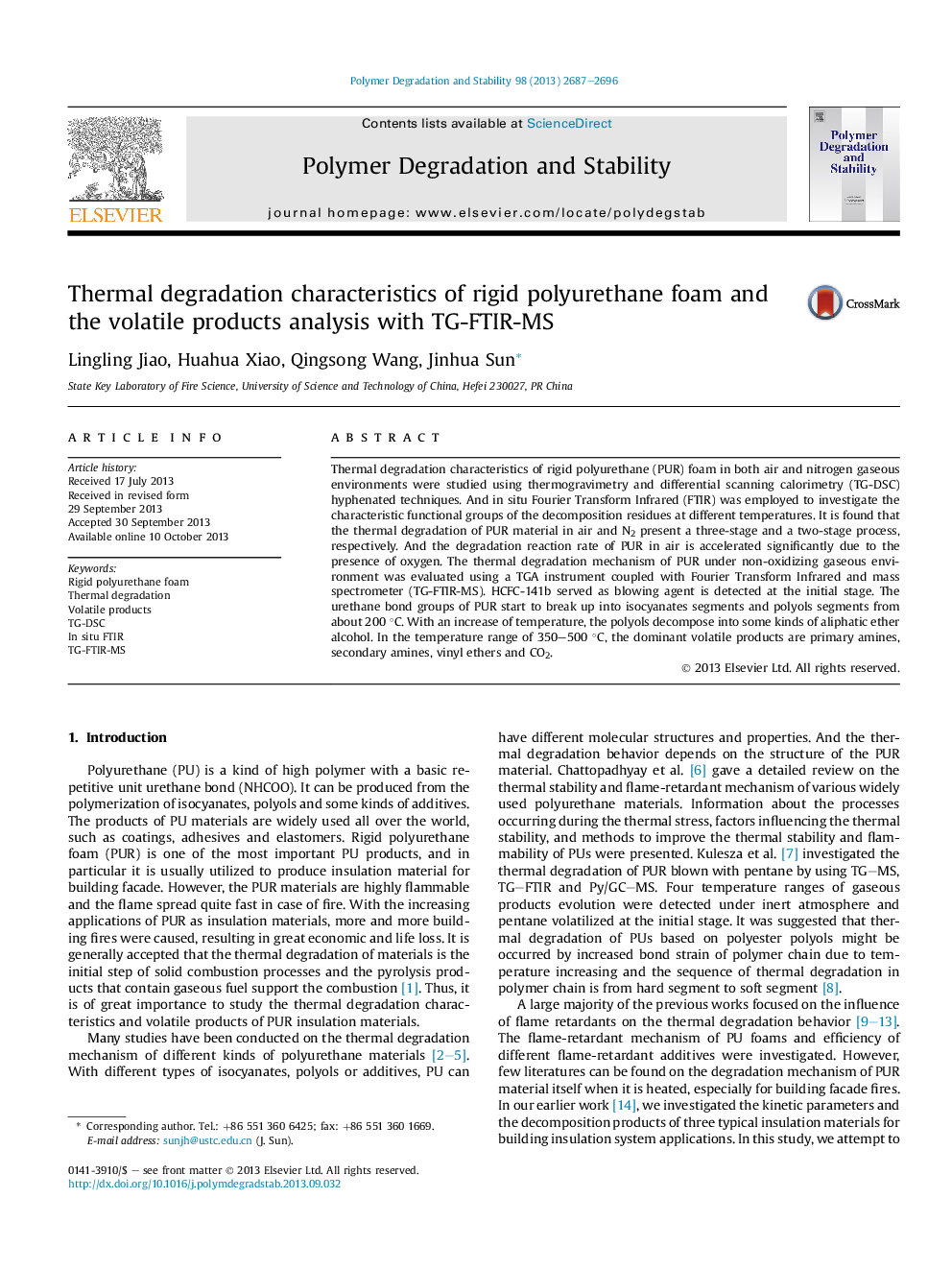| کد مقاله | کد نشریه | سال انتشار | مقاله انگلیسی | نسخه تمام متن |
|---|---|---|---|---|
| 5202182 | 1381890 | 2013 | 10 صفحه PDF | دانلود رایگان |

Thermal degradation characteristics of rigid polyurethane (PUR) foam in both air and nitrogen gaseous environments were studied using thermogravimetry and differential scanning calorimetry (TG-DSC) hyphenated techniques. And in situ Fourier Transform Infrared (FTIR) was employed to investigate the characteristic functional groups of the decomposition residues at different temperatures. It is found that the thermal degradation of PUR material in air and N2 present a three-stage and a two-stage process, respectively. And the degradation reaction rate of PUR in air is accelerated significantly due to the presence of oxygen. The thermal degradation mechanism of PUR under non-oxidizing gaseous environment was evaluated using a TGA instrument coupled with Fourier Transform Infrared and mass spectrometer (TG-FTIR-MS). HCFC-141b served as blowing agent is detected at the initial stage. The urethane bond groups of PUR start to break up into isocyanates segments and polyols segments from about 200 °C. With an increase of temperature, the polyols decompose into some kinds of aliphatic ether alcohol. In the temperature range of 350-500 °C, the dominant volatile products are primary amines, secondary amines, vinyl ethers and CO2.
Journal: Polymer Degradation and Stability - Volume 98, Issue 12, December 2013, Pages 2687-2696